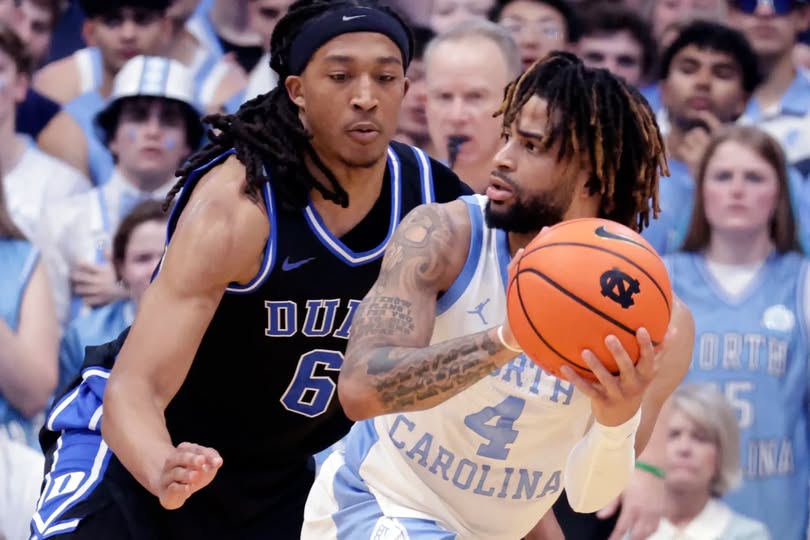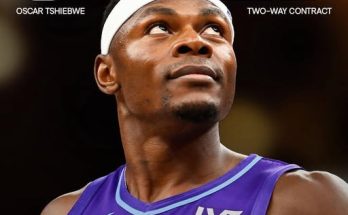From the moment Maliq Brown made his presence known at Duke, it was clear the Blue Devils had acquired more than just a transfer—they had secured The Connector. Brown, a 6’9” forward from Culpeper, Virginia, arrived after two standout seasons at Syracuse. There, he dominated headlines: averaging 9.5 points, 7.2 rebounds, and a league-leading 2.2 steals per game in 2023–24; his stellar play earned him a spot on the ACC All‑Defensive Team and third place in conference voting . But his decision to commit to Duke in April 2024 hinted that something greater was in play—a title chase, a chance for a bigger stage, a chance to connect with the moment.
Brown’s strengths carried over immediately. Before lacing up for Duke in earnest, coach Jon Scheyer was singing his praises. At ACC Tipoff, Scheyer described him as “versatile,” “selfless,” with “activity on and off the ball just unmatched”—a defender capable of rattling even the top offensive tale. And early in the season, Brown backed that up: watching film highlights, his steals and deflections read like a laundry list of disruption—wrangling possession, enforcing defensive focus, empowering teammates to play freer and better.
One of the earliest statements of intent came against North Carolina on February 1. Duke, already committed to dominance in the rivalry, unleashed its most complete half of the season—with Brown back after a knee injury against Pittsburgh. Though his only score was a late bucket, his impact was unmistakable: he snatched a steal right after entering, shifted the momentum, and unlocked offensive flow. Tyrese Proctor praised his passing acumen; Scheyer lauded his winning mentality. Brown didn’t need to lead the stat sheet; his presence turned Duke’s defense into “great” rather than just “very good” .
At Syracuse, Brown had never shied away from the limelight. He earned his reputation playing various roles—small-ball five, secondary playmaker, glass-crashing rebounder—but Duke made his intangible gifts shine: his switchable defense, ability to defend 1 through 5, deflection wizardry, and court awareness—all became pivotal in the Cameron Indoor lineup .
His defensive dominance was spotlighted again in March—when Duke locked down UNC’s RJ Davis. Brown, timbered and sharp, ran off screens, forced Davis out of rhythm, contested every shot, and tipped the Tar Heel star’s confidence. By halftime, Davis had 15 points; by game’s end, UNC was crippled by 22 misses in their last 27 attempts. UNC coach Hubert Davis singled Brown out: “He’s their best defensive big… his ability to guard on the perimeter, guard in the post, defend without fouling, get steals and deflections is at an elite level” That game clinched the ACC regular-season title for Duke and solidified Brown’s nickname as “the game‑changer” .
Midseason adversity struck: Brown dislocated his shoulder in February against Virginia. It was a blow for a squad built on his defensive glue. Coach Scheyer remarked, “He’s a big loss for us,” acknowledging the depth vacuum it created Analytics-backed voices, like those on Reddit, speculated that losing Brown meant losing a top-tier defender—“probably the best overall defender besides Cooper [Flagg]… Arguably the best defensive player in the country” Duke scrambled lineups, testing the limits of “death lineups” and other combos without their defensive anchor ).
But that was all part of the journey. Brown, despite the injury, soldiered on. Scheyer remained optimistic, emphasizing imaging was clear and recovery going well . And in early Sweet 16 matchups, whispers turned to roars: Brown may play against Arizona—just in time to regain that missing defensive presence .
Even with limited minutes, his return triggered a palpable shift. Duke’s lineup fell back in form: defensive switching returned, possessions ended differently, guards could trust their help-side. As he returned, Brown dropped offense too: hitting two threes against UNC, extending defenses, and offering crisp transition feeds . He wasn’t just “back”; he was better.
It’s not surprising that inside the locker room and on Reddit forums, fans termed him “goated,” trainees of his defensive artistry, calling him “the best 8th man in the country by a mile” . His journey from Syracuse glue guy to Duke connector, far from theatrical, has been transformational.
What makes Brown truly special isn’t headline stats—he averages just a few points per game at Duke—but the trifecta of defensive switching, deflections, and cerebral passing that ignites team performance. His shot chart isn’t loud, but his effective field goal percentage (near 70%) reflects a player who understands his role and excels within it . His pass-to-score plays, court IQ, and selfless attitude earned raves from Tyrese Proctor, Caleb Foster, and Scheyer himself .
Now, as Duke eyes March Madness, Brown’s value can’t be overstated. When it matters most, his ability to sabotage screens, contest threes, reverse momentum, and integrate offense on sudden switches could carry Duke to final trophies. In modern basketball’s era of position-less chaos, a defender who can play any role, handle guards, switch to 5s, and provide passing is rare—exactly the kind of chess piece championship teams build around.
Brown’s journey also shows his resilience: overcoming knee and shoulder injuries, returning stronger, sharper. The re-dislocation in March sparked concerns online—yet his return post-shoulder shows his resolve and the team’s need for him . Coaches and players rallied around the idea that Brown doesn’t just fill a slot; he embodies the mentality of winning.
From Syracuse’s overlooked “glue guy” to Duke’s cornerstone defensive specialist, Maliq Brown is stealing the spotlight—not with flash, but with function. He doesn’t score chains or chase selfies; he pops up as the unsung hero in game-defining moments. In Duke’s ecosystem of stars like Cooper Flagg, Khaman Maluach, and Tyrese Proctor, Brown is the mastermind behind calm offense, locked-down defense, floor balance.
Yes, he’s a freshman in this Duke chapter, but he’s a veteran in mission. When rivals come calling, he’s the answer. And as Duke treks toward March’s high-stakes tournament, Brown stands at the center—not in the box score, but in the structure supporting greatness.
Maliq Brown is more than a transfr; he’s the heartbeat of Duke’s defense and the architect of thoughtful team play. In an era that glorifies scoring bursts and highlight reels, Brown reminds us: connection, consistency, and chaos creation can steer a team to glory. He’s already stealing the show—and he’s just getting warmed up.



